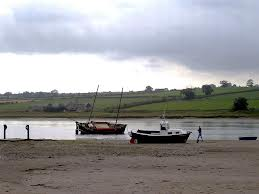Fishing
On the Northumberland coast, farming and fishing traditionally existed side-by-side. Some fishing was carried out in Alnmouth, but not on a large scale. In nearby Boulmer, the main occupation in the 1800s was fishing with the traditional “coble” for herring, white fish and shellfish. Salmon and trout were caught by fishing with nets “anchored” on the beach.

Alnmouth Harbour
Records show that corn was produced on the Craster Estate at the end of the thirteenth century, but by the middle of the nineteenth century, fishing was of primary importance. In 1863, there were 33 herring boats and 17 line fishing boats operating out of Craster. As there was no harbour, the catch was transferred to smaller boats and brought ashore where the fishermen and women cleaned and gutted the fish. By that time, kippering had been introduced, and at the turn of the century, kippers were being loaded onto the night train to London for sale in Billingsgate Market the next morning.
At one time, the houses in The Square at Newton-by-the-Sea were all occupied by fishermen and their families, the latter helping to haul the boats into and out of the sea. Although some herring was caught, line fishing was more commonly used.
Hauxley was a fishing village until the sinking of pits in the nineteenth century.
Amble was originally a small agricultural hamlet until a harbour was built in 1844 for shipping coal from nearby collieries. A fish dock provided anchorage for cobles, but even in the 1920s there were only a few fishermen, who genrally went to sea in the summer months and followed other occupations in winter. It was not until after the demise of the coal industry, and again after the Second World War that the number of cobles and Seine-netters in Amble increased. Now, fish landed at Amble goes to markets as far apart as Scotland and the south of England.

